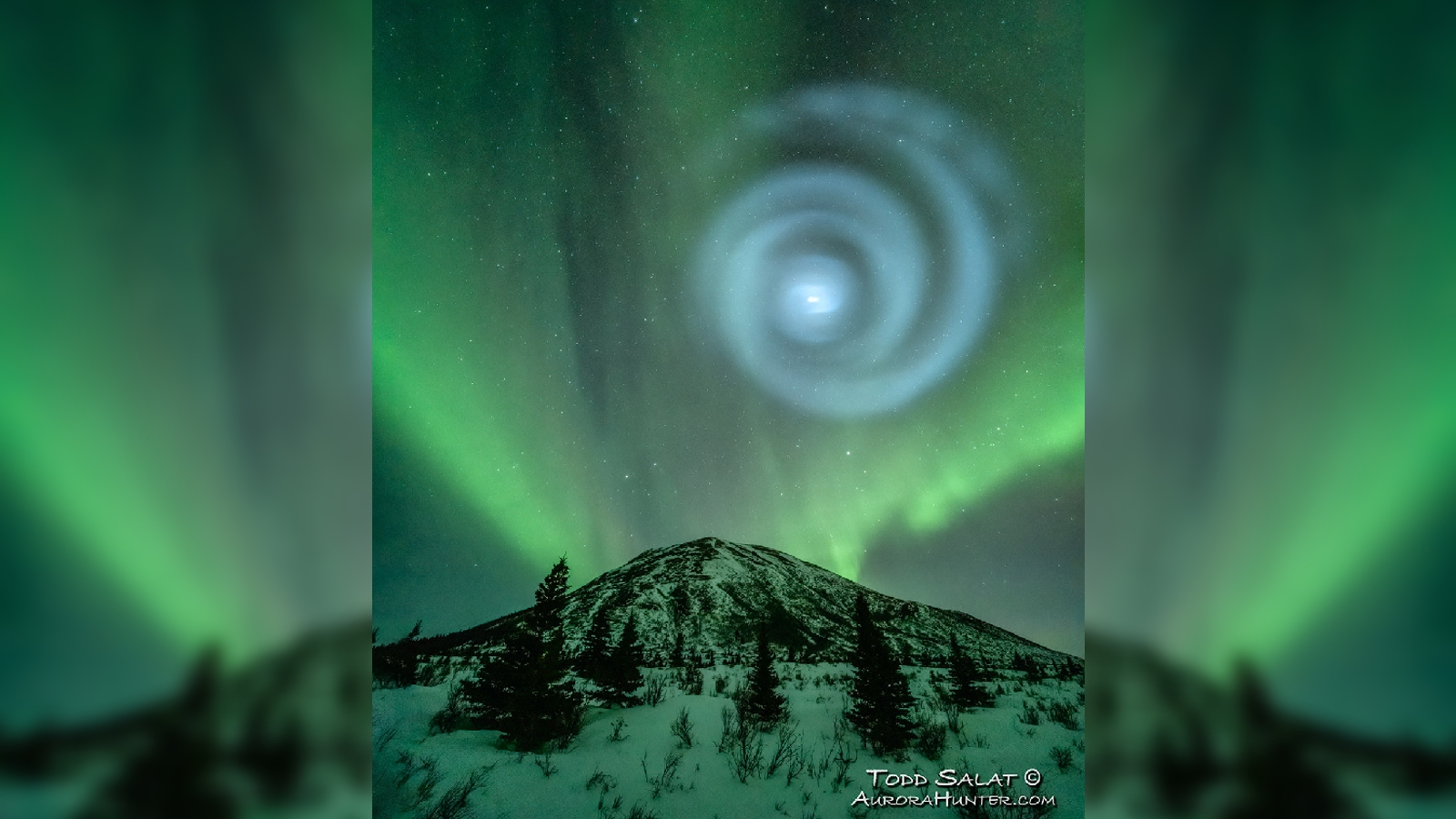Ethereal whirlpool of light grows into a giant, perfect spiral above Alaska. What was it?
A mystifying swirl of light recently appeared in the night sky above Alaska, briefly outshining a vibrant auroral display.
An ethereal whirlpool of light recently appeared in the night sky above Alaska, briefly stealing the limelight from a strong auroral display. But the bizarre, spiral-shaped object had nothing to do with the dancing polar lights.
Instead, the luminous vortex was just the latest example of what astronomers have nicknamed "SpaceX spirals," which are becoming an increasingly common sight for stargazers across the globe. These spirals form when rocket fuel, which is ejected from the fast-spinning upper stages of Falcon 9 rockets, gets frozen in space. These frozen swirls then reflect sunlight back towards Earth, which makes them visible to stunned onlookers on the ground.
The spiral was spotted in the sky above Alaska on April 15 at around midnight local time, while vibrant green Northern Lights were already dancing across the night sky, Spaceweather.com reported. The strange whirlpool was was filmed by cameras at the University of Alaska's Poker Flat Research Range near Fairbanks.
The video shows the spiral forming from an initial bright spot into a massive galaxy-shaped object, before gradually fading into nothingness. It was visible for around seven minutes.
"I was utterly surprised and mystified when I first spotted a distant bright light coming toward me from the northern horizon," Todd Salat, an astrophotographer who captured an image of the spiral above Donnelly Dome near Delta Junction, told Spaceweather.com. "At first I thought it was a jet airliner flying through some clouds. Then it took on the spiral shape and grew big fast!"
Related: Eerie ring of red light flashes like a massive UFO above Italy. What was it?
The spiral was made up of fuel ejected by a Falcon 9 rocket that launched from California's Vandenberg Space Force Base around three hours before the whirlpool appeared. The rocket successfully deployed 51 satellites into Earth-orbit, bolstering both SpaceX's own Starlink constellation and satellite networks belonging to other private companies, SpaceNews reported.
Get the world’s most fascinating discoveries delivered straight to your inbox.
Not every SpaceX rocket launch leads to a SpaceX spiral. Many occur above the vast, empty expanse of the Pacific Ocean, or during the day when they are not visible at all. However, the spirals have become more common in recent years as the number of SpaceX launches has increased.
On Jan. 18, an eerily-perfect spiral was filmed above Hawaii by the Subaru-Asahi Star Camera, mounted on Mauna Kea and operated by the National Astronomical Observatory of Japan. The same camera also spied another striking spiral in April 2022.
In June 2022, a frozen swirl was also snapped above New Zealand, Live Science's sister site Space.com reported.
But SpaceX is not the only cause of these rocket-derived light shows.
In April 2022, frozen fuel from a Chinese rocket created a spinning orb of light that also photobombed an auroral display above Alaska. And in October 2017, an even larger blue orb was seen in the sky above Siberia, according to ScienceAlert. On that occasion, the frozen fuel was left by Russian military rocket tests in the area.

Harry is a U.K.-based senior staff writer at Live Science. He studied marine biology at the University of Exeter before training to become a journalist. He covers a wide range of topics including space exploration, planetary science, space weather, climate change, animal behavior and paleontology. His recent work on the solar maximum won "best space submission" at the 2024 Aerospace Media Awards and was shortlisted in the "top scoop" category at the NCTJ Awards for Excellence in 2023. He also writes Live Science's weekly Earth from space series.





